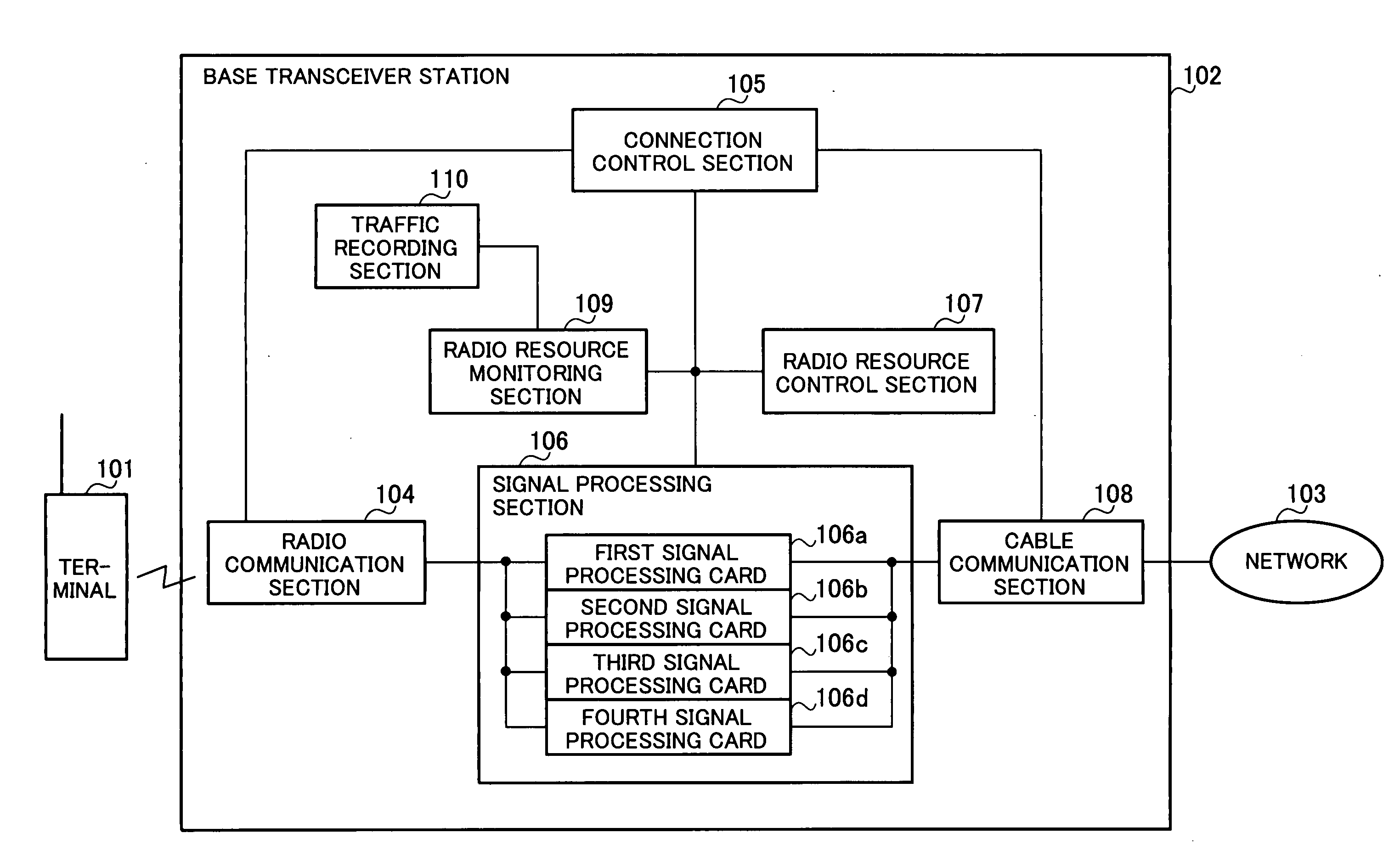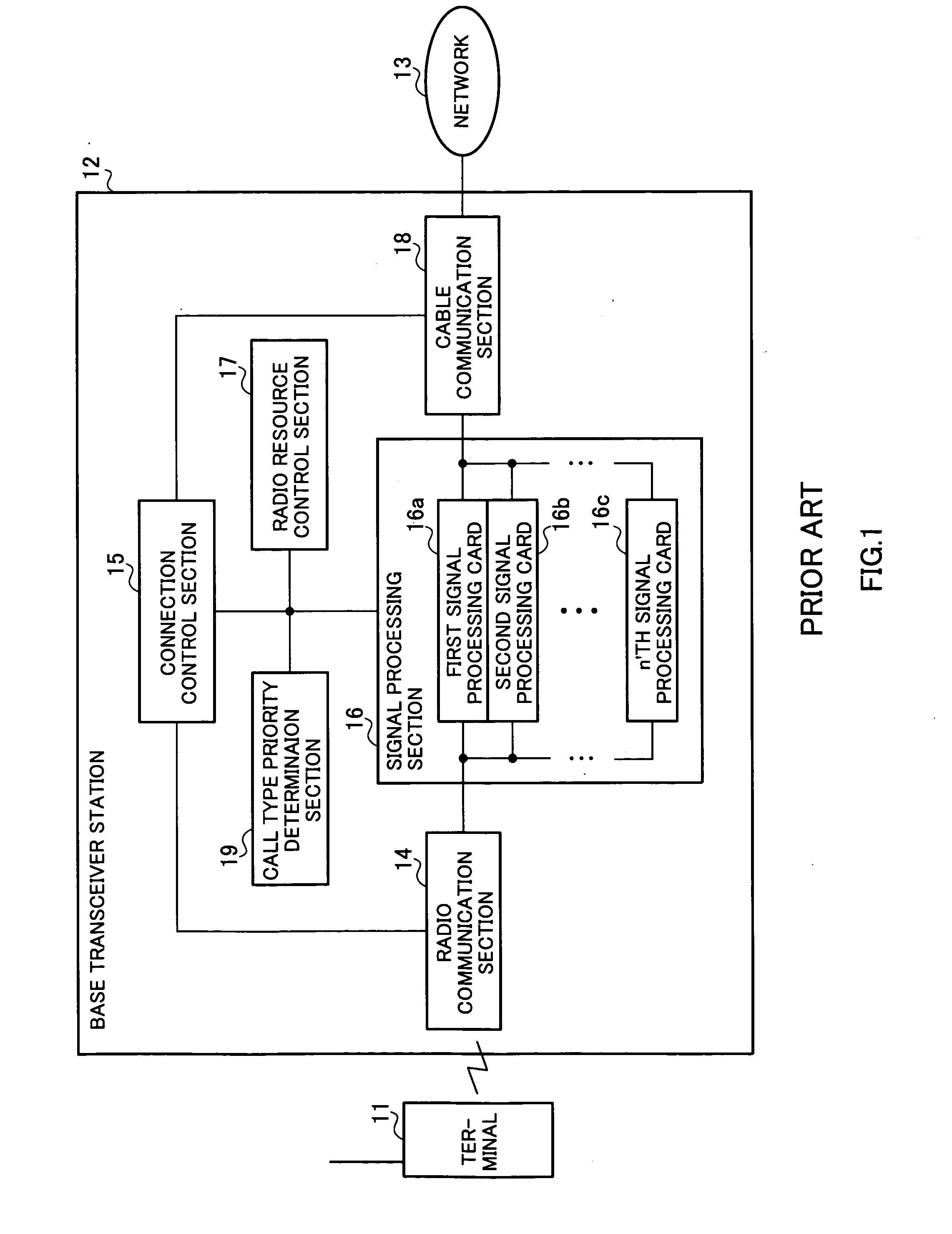Resource relocation method, base station, and radio network control device
a resource relocation and resource technology, applied in the direction of network traffic/resource management, electrical equipment, radio transmission, etc., can solve the problems of high cost, poor resource allocation effect, and poor efficiency, and achieve the effect of efficient resource allocation
- Summary
- Abstract
- Description
- Claims
- Application Information
AI Technical Summary
Benefits of technology
Problems solved by technology
Method used
Image
Examples
embodiment 1
[0088] This embodiment is an efficient resource relocation scheme in a W-CDMA system in which resource hold times and required numbers of resources vary greatly. When a plurality of types of calls for which the required numbers of resources vary are accommodated in a base transceiver station using a plurality of signal processing cards, it may not be possible to accommodate a call for which the number of required resources is large in a signal processing card to which a call has already been allocated. In contrast, with the present invention, call loss is reduced and signal processing card capacity is utilized effectively by determining a threshold value according to the number of resources of a call to be accommodated, and, when vacant resources equivalent to the threshold value are no longer present in any signal processing card, performing call relocation so that a call with as large a number of required resources as possible can be accommodated.
[0089] In this embodiment, a sect...
embodiment 2
[0191] A second embodiment of the present invention will now be described.
[0192] It is an object of this embodiment to prevent call loss occurring in base transceiver stations due to execution of terminal resource relocation (handover) when a terminal is under a plurality of base transceiver stations.
[0193] A block diagram of a system configuration according to this embodiment is shown in FIG. 9.
[0194] In FIG. 9, reference codes 801 and 802 denote a first terminal and second terminal, respectively.
[0195] Reference codes 803, 804, and 805 denote a first base transceiver station, second base transceiver station, and third base transceiver station respectively.
[0196] In this embodiment, it is assumed that all base transceiver stations are of small scale and a large number of base transceiver stations are located in buildings or nearby places, and that there is significant overlapping of the coverage areas of various base transceiver stations. It is here assumed in that terminal 80...
embodiment 3
[0218] This embodiment shows a scheme for performing resource relocation efficiently when there are a plurality of hardware units such as LSIs performing signal processing in a signal processing card, and there is a restriction that does not enable resources for one call to be allocated across a plurality of hardware units.
[0219] This algorithm is particularly effective when traffic is heavy but there are vacant resources overall in the signal processing cards installed in a base transceiver station, and those vacant resources are dispersed among a plurality of cards.
[0220] In the following description, hardware that performs signal processing, of which a plurality are present in a signal processing card, is referred to as a unit.
[0221] This third embodiment of the present invention will now be described.
[0222]FIG. 11 shows a block configuration diagram of the present invention.
[0223] In FIG. 11, reference codes 1101 through 1108 correspond to reference codes 11 through 18 in t...
PUM
 Login to View More
Login to View More Abstract
Description
Claims
Application Information
 Login to View More
Login to View More - R&D
- Intellectual Property
- Life Sciences
- Materials
- Tech Scout
- Unparalleled Data Quality
- Higher Quality Content
- 60% Fewer Hallucinations
Browse by: Latest US Patents, China's latest patents, Technical Efficacy Thesaurus, Application Domain, Technology Topic, Popular Technical Reports.
© 2025 PatSnap. All rights reserved.Legal|Privacy policy|Modern Slavery Act Transparency Statement|Sitemap|About US| Contact US: help@patsnap.com



